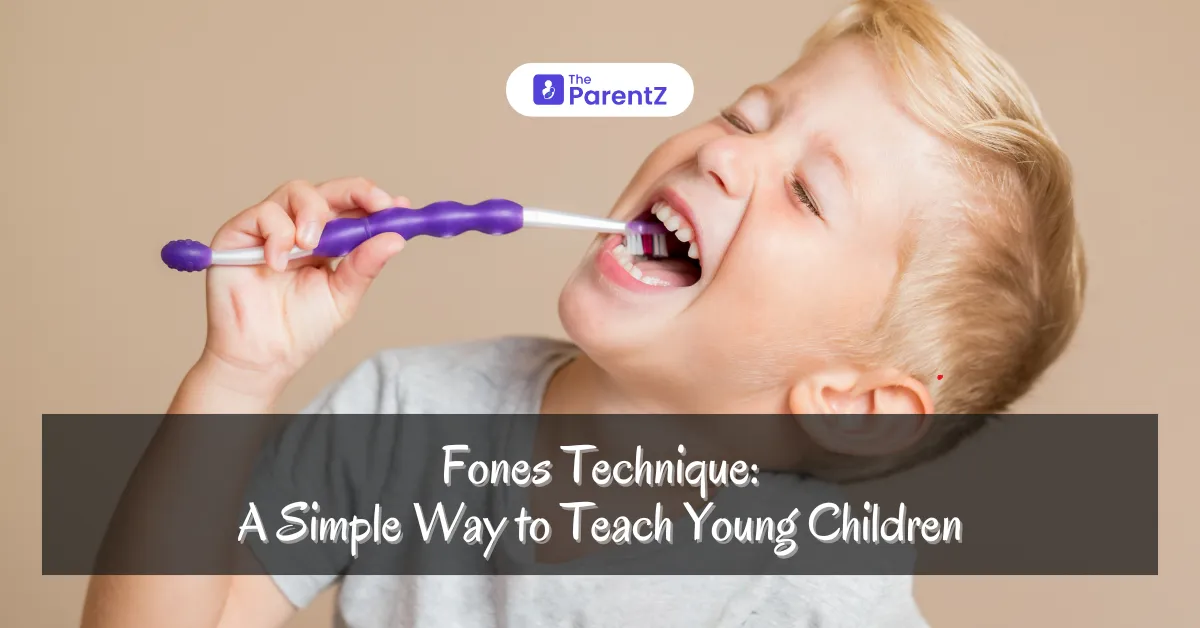Teaching children proper brushing habits is key to maintaining their oral health. While there are several toothbrushing techniques, the Fones Technique is especially popular for kids due to its simplicity and effectiveness. This method encourages gentle, circular motions, making it easy for young children to learn and practice.
A Brief History of the Fones Technique
The Fones Technique was introduced by Dr. Alfred C. Fones, an American dentist known as the father of dental hygiene. Dr. Fones developed this method in the early 20th century to teach proper brushing habits to children and dental hygiene students. His goal was to create a simple technique that would be easy for beginners to master while ensuring effective plaque removal.
Since then, the Fones Technique has been widely recommended by dental professionals, particularly for young children, due to its user-friendly approach.
What is the Fones Technique?
The Fones Technique involves brushing the teeth in large, gentle, circular motions while keeping the jaws slightly closed. This method covers both the teeth and gums simultaneously, ensuring effective cleaning of all surfaces.
Unlike techniques that focus on small, precise movements, the Fones Technique allows kids to make broad, sweeping circles, making it easier for them to control the toothbrush and clean their teeth thoroughly.
It’s especially effective for:
• Young children who are just learning how to brush
• Kids with developing motor skills who need simple, easy-to-follow instructions
• Promoting healthy brushing habits from an early age
How is the Fones Technique Different from Other Brushing Methods?
The Fones Technique stands out because of its simplicity and broad, circular brushing motion. Here’s how it differs from other common techniques:
1. Brushing Motion:
• The Fones Technique uses large, circular motions that cover both teeth and gums simultaneously.
• In contrast, the Stillman Method uses gentle, vibratory back-and-forth motions at a 45-degree angle to the gums, which requires more precision.
2. Ease of Use:
• The Fones Technique is easy to learn, making it ideal for young children and beginners.
• Techniques like the Bass Method require more controlled, small movements, which may be challenging for kids to master.
3. Focus Area:
• The Fones Technique cleans broad tooth surfaces efficiently, especially the front teeth, which are often the most visible and accessible for kids.
• Other techniques, like the horizontal scrub, may focus more on the chewing surfaces but can be too harsh on gums if not done properly.
4. Gum Stimulation:
• The circular motion of the Fones Technique provides gentle gum stimulation, promoting healthy blood flow.
• Methods like horizontal scrubbing lack this benefit and can even cause gum damage over time.
5. Time Efficiency:
• Since the Fones Technique covers a larger area with each motion, it can be quicker while still being effective.
• Techniques that require detailed attention to each tooth may take longer, which can be challenging for impatient kids.
Benefits of the Fones Technique for Kids
1. Simple and Easy to Learn: Perfect for young children who are just starting to brush independently.
2. Effective Cleaning: The broad, circular motion effectively removes plaque from teeth and gums.
3. Gentle on Gums: Reduces the risk of gum irritation compared to aggressive scrubbing techniques.
4. Promotes Healthy Habits: Encourages consistent brushing routines from an early age.
5. Quick and Efficient: Covers large tooth surfaces quickly, making brushing less of a chore for kids.
Step-by-Step Guide: How to Teach the Fones Technique to Kids
1. Choose the Right Toothbrush:
• Use a soft-bristled toothbrush designed for children’s smaller mouths.
• Fun colors or characters can make brushing more exciting.
2. Apply the Right Amount of Toothpaste:
• For children aged 3 and older, use a pea-sized amount of fluoride toothpaste.
• For kids under 3, a smear about the size of a grain of rice is sufficient.
3. Proper Positioning:
• Ask your child to close their mouth slightly so the teeth are together but not clenched.
• Place the toothbrush bristles against the outer surfaces of the teeth and gums.
4. Use Gentle Circular Motions:
• Guide your child to move the brush in large, gentle circles, covering both teeth and gums.
• Make sure they brush the front, sides, and back teeth thoroughly.
5. Focus on Each Section:
• Start with the outer surfaces of the upper and lower teeth.
• Move to the inner surfaces by opening the mouth slightly and using the same circular motion.
• For the chewing surfaces, use short back-and-forth scrubbing motions.
6. Brush the Tongue:
• Gently brush the tongue to remove bacteria and freshen breath.
7. Brush for 2 Minutes:
• Aim for at least 2 minutes of brushing. Use a timer or play a fun song to keep your child engaged.
8. Rinse and Smile:
• Rinse with water, and encourage your child to admire their clean, healthy teeth!
Fun Tips to Make Brushing Enjoyable for Kids
• Toothbrushing Songs: Play a 2-minute song to keep brushing fun and on track.
• Brushing Challenges: Create friendly competitions to see who can brush the longest without stopping.
• Sticker Charts: Reward your child with stickers for consistent brushing habits.
• Family Brushing Time: Brush together as a family to set a good example.
• Storytelling: Turn brushing into an adventure where your child is a hero fighting off “plaque monsters.”
Common Mistakes to Avoid
• Brushing Too Hard: Kids may think harder brushing cleans better. Emphasize gentle pressure to avoid damaging gums.
• Rushing Through Brushing: Encourage kids to take their time and brush for a full 2 minutes.
• Missing the Back Teeth: Teach your child to reach all areas, including the back molars, which are prone to cavities.
• Not Brushing the Gums: Remind your child to brush gently along the gum line for complete oral health.
When to Introduce the Fones Technique to Kids
The Fones Technique can be introduced as soon as your child is ready to start brushing independently, usually around 3 to 4 years old. However, parental supervision is recommended until they develop the coordination to brush effectively on their own, typically by age 6 or 7.
Final Thoughts
The Fones Technique is one of the easiest and most effective toothbrushing methods for kids. Its simple, circular motion is easy to learn, gentle on the gums, and highly effective at removing plaque. By teaching your child the Fones Technique, you’re helping them develop healthy oral hygiene habits that will last a lifetime.








Be the first one to comment on this story.